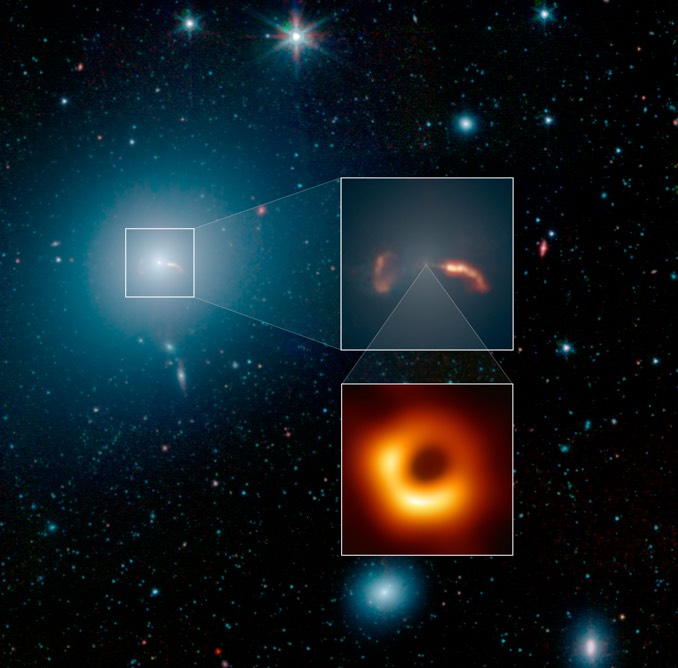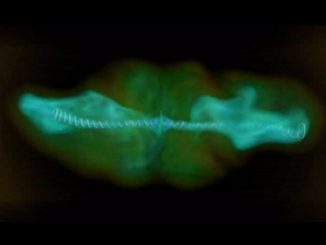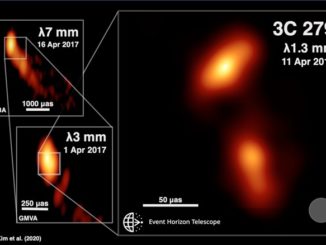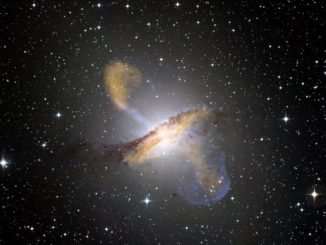
The Event Horizon Telescope’s first ever image of a supermassive black hole’s event horizon, or more properly, the shadow of the black hole on high-energy material behind it, generated headlines around the world when it was unveiled on 10 April. To put that iconic image in contact, NASA has released an infrared view of the black hole’s host galaxy – M87 – as seen by the Spitzer Space Telescope.
M87, located some 55 million light years from Earth, has long fascinated astronomers, who early on noticed a long jet-like structure extending away from the galaxy’s nucleus. It’s now known that M87 features two such jets, one aimed almost in Earth’s direction, that are generated by a disc of material rapidly rotating around a 5.6-billion-solar mass black hole at the heart of the galaxy.
Where the jets interact with atoms and molecules in the interstellar medium, shockwaves are generated that radiate in infrared and radio wavelengths. The brightness of the jet shooting away along the line of sight toward Earth is amplified by relativistic effects. Shockwaves appear near the point where the jet appears to curve downward. The second jet is moving at near light speed away from Earth and is virtually invisible, but shockwaves can be seen where it interacts with the interstellar gas and dust.
Scientists are working to understand how such jets are generated by material falling into black holes by studying them across the electromagnetic spectrum, combining observations in infrared, radio, visible light, X-rays and high-energy gamma rays.



